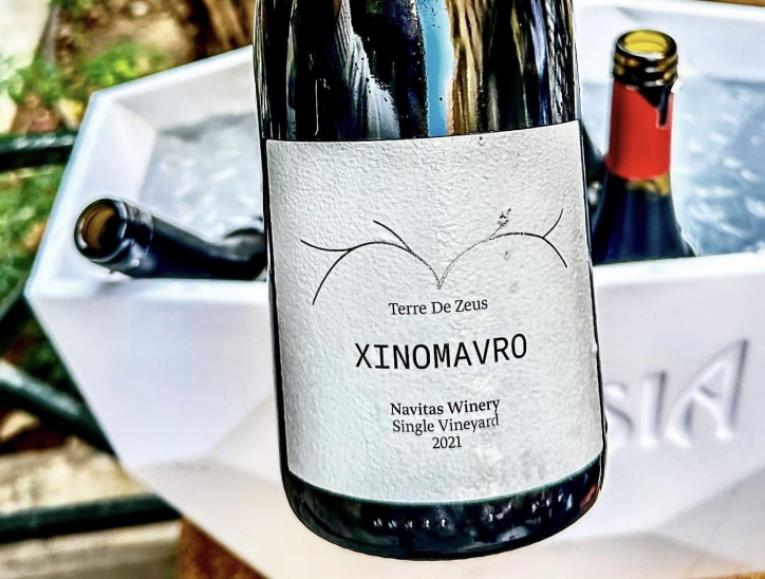Elegant Greek Reds: Agiorgitiko, Xinomavro and beyond
Greek red wines of elegance from Agiorgitiko, Xinomavro, Mavrodaphne, Limnio, Limniona, Liatiko and Vlahiko.
I've written about what I call the ‘era of elegance’ for Greek wine since 2013. By this, I mean the transition from the over-ripe, concentrated style, to the more silky, delicate and focused wines. And it is clear that several steps have been taken in this direction in our country, especially for whites, which are now expressed with moderate alcohol (with the exception of Santorini) and with an even better (more distant) relationship to oak.
For the reds, however, it is still a battlefield for courageous producers. I believe that two things need to be avoided: over maturity and over-oaking. It is particularly important to avoid American oak, which for me destroys every possibility of expressing terroir – it masks the wine with sweet coconut, almost 'bounty chocolate' aromas. The good news is that there are already more than a handful of wines that have moved in that lighter direction and have achieved a combination of drinking pleasure, silkiness and immediate drinkability; a more “Pinot Noir” character. If I am not missing any, these are:
Thymiopoulos Naoussa Alta: Xinomavro from mountainous Fytia, whole bunch fermented and with no new oak maturation. A seductive, perfumed and refined wine.
Oenops Xinomavraw: this is the 'natural' attempt of Nikos Karatzas sourcing Xinomavro fruit from Naoussa, Rapsani and Goumenissa. A song of roses, crunchy cherries and crushed peppercorns. Firm, but sensual, with a slightly tannic finish.
Tetramythos Black Kalavritino and Agiorgitiko Natur: Tetramythos from mountainous Aigialeia in the Peloponnese is one of the strongest advocates of natural approaches and light hand winemaking. Both wines from local varieties of the region are elegant and harmonious.
Sant'or Agiorgitiko from the biodynamic Sant'or producer that has managed to summarize all the virtues of Agiorgitiko and express it in a pure and utterly delicious style.
Mitravelas Nemea 2017: an attempt from Kostas Mitravelas and his winemaker Dimitris Akrivos to produce a more terroir-driven Nemea. They’ve used old oak and less oak aging. A beautiful wine with almost silky tannins.
Rouvalis Tsigelo Mavrodaphne: a relaunch of Mavrodaphne, a variety usually associated with sweet wines, as a dry wine matured in amphora, which manages to express all the herbal and spicy elements of the variety.
Zafeirakis Limniona: a wine that paved the way towards an approach of this sort. More silk than velvet on the palate with supple tannins and an intense peppery finish.
Diamantakis Petali Liatiko: Liatiko makes a statement for Greek wine, combining ripeness with solid tannic structure and a wonderful aromatic bouquet. Lovely red cherry, pomegranate and wild strawberry on the nose, along with floral notes. Matured solely in stainless steel to preserve fruit.
Limnio Kikones: One of the most classic light reds in Greece and again a wine that paved the way towards this style. From the Thrace region.
Katogi - Averoff Vlahiko, A fantastic cool climate red wine from the highlands of Epirus in Western Greece. Looks like Pinot Noir. The nose is sensual, with notes of roses and crushed peppercorns. Elegant on the palate, with firm tannins on the long finish. A revelation and a wine that deserves more recognition.
Last September, I even organized a seminar with Terry Kandylis (Head Sommelier of 67 Pall Mall) that focused exactly on the topic of New Wave Reds. We tasted a new style of wine that stands out for its personality, despite being on the lighter side, which includes elements like grace, energy, tension, and precision. We tasted and enjoyed wines which don’t make one struggle with the acidity and tannins of the wine. Among these were examples from Kutch, Domaine de la Cote, Commando G, Bodegas Frontonio, Wind Gap; wines unknown to the Greek market to now. As Terry rightly pointed out, these wines combine low alcohol, freshness and what we call an easy to drink approach in the consciousness of the consumer, and have begun to occupy more space in his preferences. In addition, many sommeliers are turning to suggestions of this sort, as it is much easier to match them with food and to create exquisite wine pairings. The main reason is that they don't need another dish to complement the one they are already served with, especially when there are multiple menus.
I'd like to see more of this easy to drink approach in our red wines. Don't get me wrong, I'm not talking about just one style of red wine, just the inclusion of more wines in the light reds category. Wines one can chill out in the summer and drink enjoyably, without the alcohol and intensity overwhelming the senses. Wines that can be included in wine lists and allow customers to ask for a second glass. Wines that are light on their feet highlighting and preserving terroir. Wines that do not need a knife to cut into the fruit.




